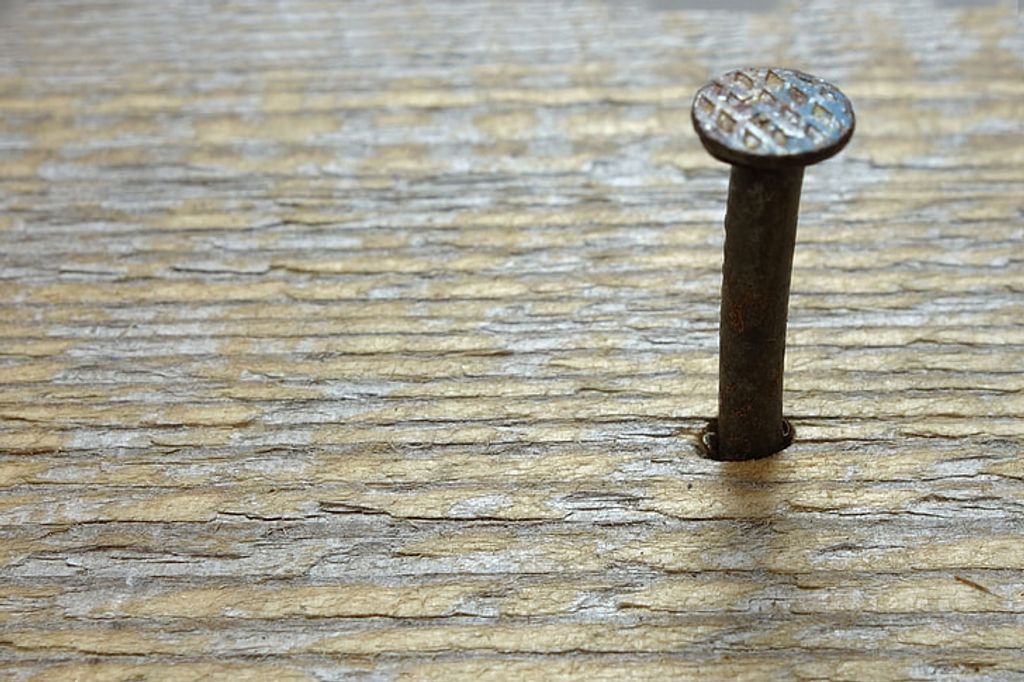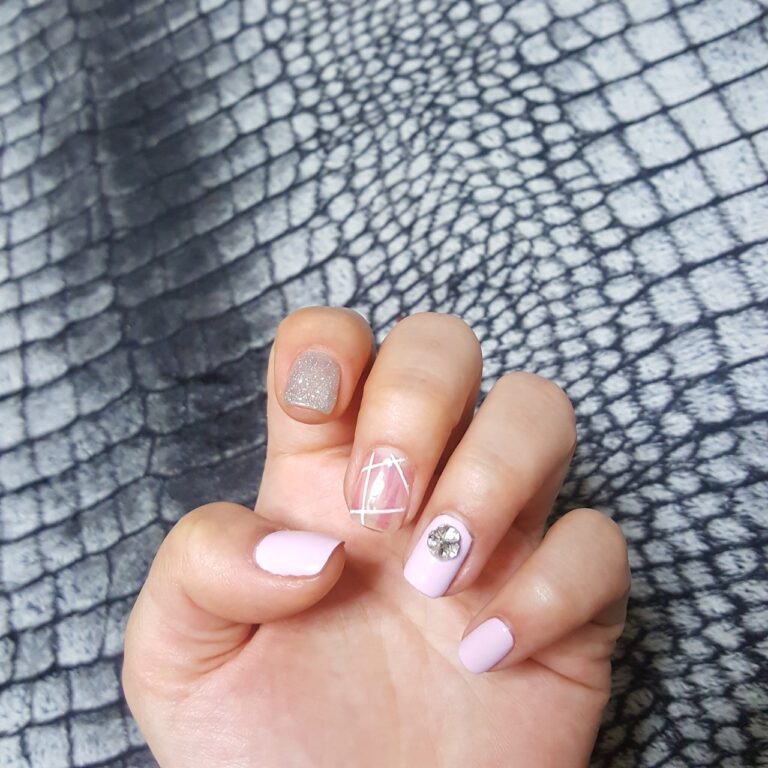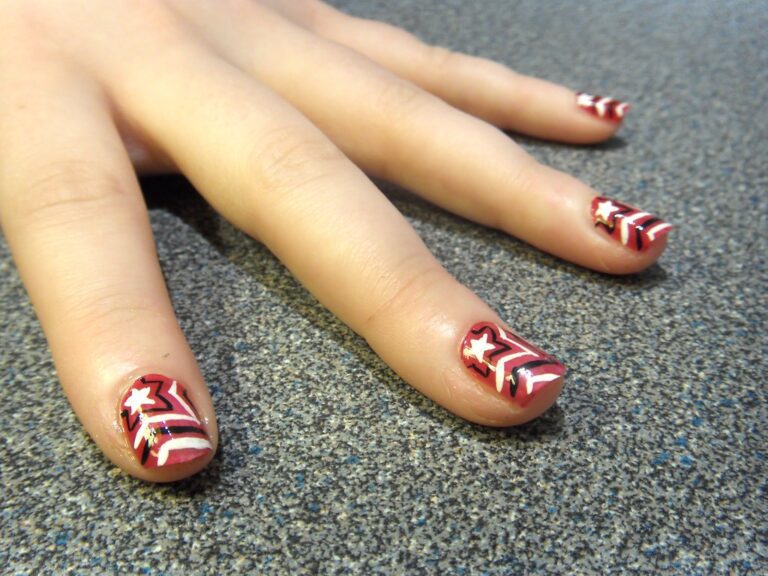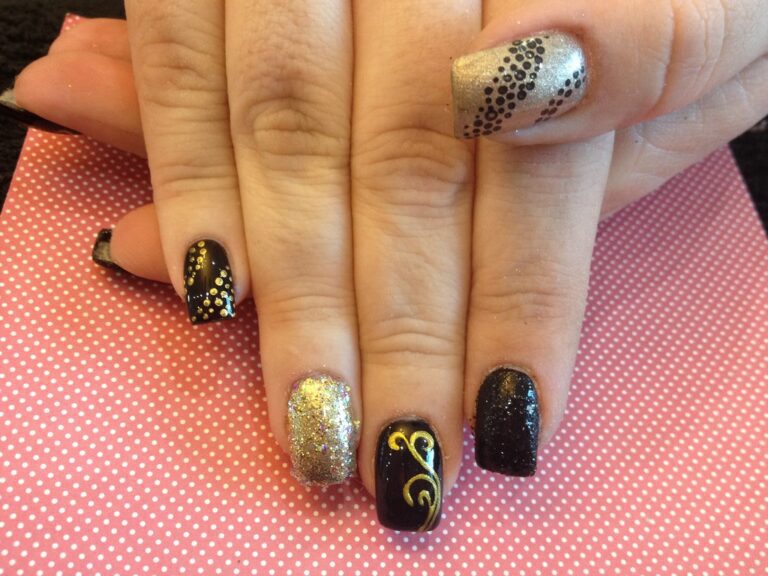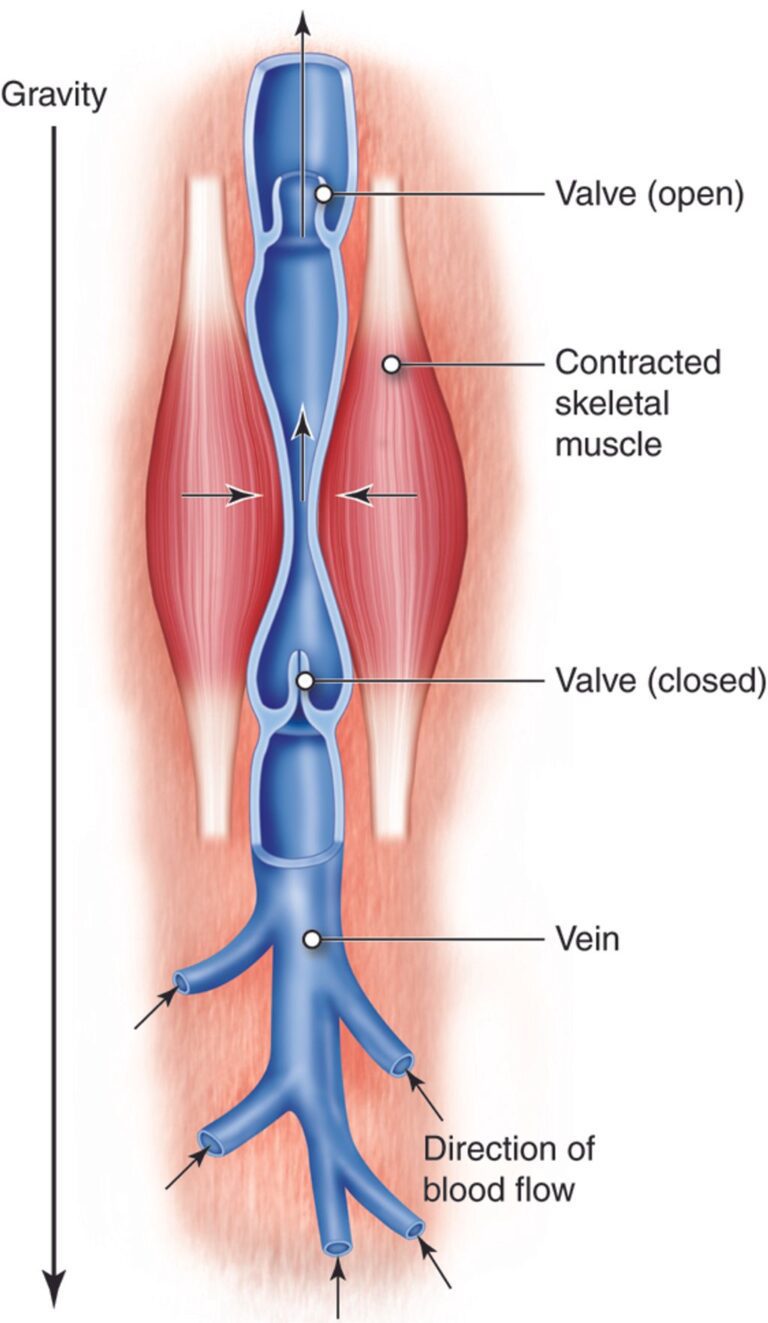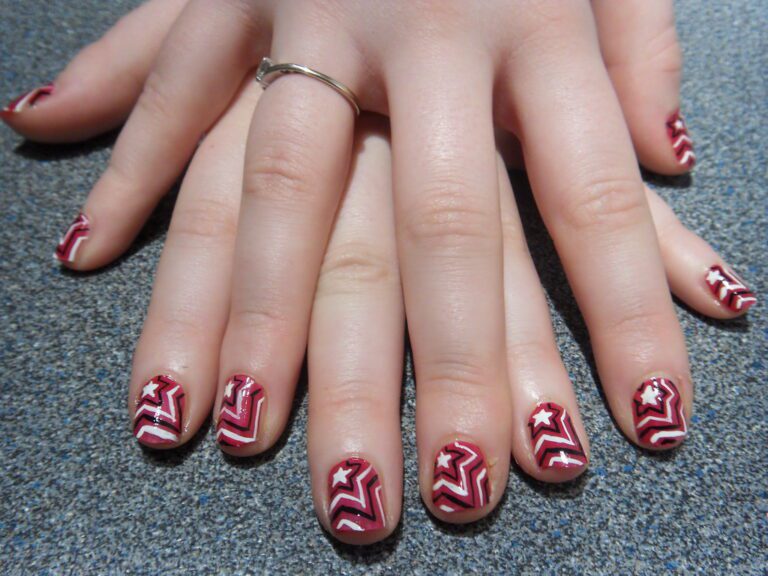“Ridge Riddles: Why Nails Have Ridges”
Nail ridges are a common phenomenon that can often raise questions about their causes and implications. In this article, we will delve into the mystery of nail ridges, exploring their anatomy, common causes, health implications, care practices, genetic influences, environmental factors, and advancements in research. By understanding nail ridges, we can gain valuable insights into our nail health and well-being.
Key Takeaways
- Nail ridges can be caused by aging, nutritional deficiencies, and health conditions.
- Assessing nail ridges can provide important clues about underlying health issues.
- Proper nail maintenance and care practices can help improve the appearance of ridged nails.
- Genetics play a significant role in determining nail texture and structure.
- Environmental factors such as climate and chemical exposure can impact nail health.
Unveiling the Mystery of Nail Ridges

Defining Nail Ridges
Nail ridges are the lines or grooves that run either vertically or horizontally across the nail plate. While often considered a cosmetic concern, these ridges can also be indicative of underlying health issues. The presence of nail ridges is a common phenomenon, and understanding their nature is the first step in addressing any potential problems.
Vertical ridges, which run from the cuticle to the tip of the nail, are typically a normal sign of aging and are rarely a cause for concern. On the other hand, horizontal ridges may signal stress or trauma to the nail bed and can sometimes be associated with more serious health conditions.
Tip: Consistent nail care and observation are essential for maintaining nail health and spotting any unusual changes early on.
It is important to differentiate between the harmless and potentially harmful types of nail ridges, as this can guide appropriate treatment and care.
Types of Nail Ridges: Vertical and Horizontal
Nail ridges are a common phenomenon, with most individuals experiencing them at some point in their lives. These ridges can run in different directions, each potentially signifying different aspects of nail health. Vertical ridges, which run from the cuticle to the tip of the nail, are often considered a normal part of aging and are usually harmless. In contrast, horizontal ridges may indicate an underlying health issue.
Horizontal ridges, also known as Beau’s lines, are disruptions in the nail plate that can signal systemic health problems. For instance, some conditions cause deep horizontal ridges rather than shallow vertical ones. These lines can appear because an illness or disorder interrupts nail growth, as highlighted in the snippet with ID "a0dc".
Tip: Consistent nail care and monitoring changes in nail texture can help in early detection of potential health issues.
Understanding the difference between these two types of ridges is crucial for assessing nail health. Here’s a simple list to distinguish them:
- Vertical ridges: Common with age, usually harmless
- Horizontal ridges (Beau’s lines): May indicate systemic health issues, such as diabetes or kidney problems
The Anatomy of the Nail

Understanding Nail Structure
The human nail is a complex structure that serves both protective and aesthetic functions. It is composed of keratin, a type of protein that is also found in skin and hair. The nail itself can be divided into several parts, including the nail plate, the nail bed, and the cuticle.
- The nail plate is the hard, translucent part of the nail that is most visible. It is made of several layers of dead, compacted cells that slide forward as the nail grows.
- The nail bed is the skin beneath the nail plate that provides nourishment and support. Rich in blood vessels, it gives the nail its pinkish color.
- The cuticle, also known as the eponychium, is the layer of skin at the base of the nail that protects new nail growth from bacterial and fungal infections.
Nail growth originates from the nail matrix, an area under the cuticle, which is responsible for cell production that forms the nail plate. As new cells are produced, older cells are pushed out, compacted, and take on the hardened form of the nail that we see.
Tip: To maintain healthy nails, it is essential to keep the cuticle intact and moisturized to prevent infections and ensure proper nail growth.
How Nails Grow and Develop
The growth and development of nails is a continuous process that begins beneath the skin at the nail root. This area, hidden under the cuticle, is where new cells are generated. As these cells grow, they push older cells forward; these older cells harden and form the visible nail plate. The rate of nail growth can be influenced by several factors, including age, nutrition, and overall health.
Nails are composed primarily of a protein called keratin, which is also found in skin and hair. The strength and health of nails are directly related to the quality and quantity of keratin produced. Factors such as hormonal changes, blood flow, and exposure to water can affect keratin production and thus nail strength.
- Proper nail care and nutrition are essential for healthy nail growth. * Including biotin-rich foods in your diet, such as eggs, almonds, and whole grains, can help improve nail strength. Additionally, keeping nails properly hydrated and avoiding harsh chemicals can prevent brittleness and splitting.
Common Causes of Nail Ridges

Aging and Nail Changes
As we age, our bodies undergo a myriad of changes, and our nails are no exception. Over time, the growth rate of nails tends to slow down, and they may become more brittle and susceptible to splitting. This is a natural part of the aging process, and while it’s not usually a cause for concern, it can be a cosmetic annoyance for some.
One of the most noticeable signs of aging in nails is the development of ridges. These ridges often appear as raised lines that run lengthwise from the cuticle to the tip of the nail. They can be subtle at first, but may become more pronounced as we get older. In addition to ridges, nails may also exhibit a yellowish hue or increased opacity.
- To maintain healthy nails despite these changes, consider the following tips:
- Keep nails trimmed and filed to minimize the risk of snags and splits.
- Use a moisturizer to keep the nail bed and cuticles hydrated.
- Wear gloves when performing tasks that could damage your nails, such as gardening or cleaning.
Remember, while changes in nail texture and color are often harmless, sudden or dramatic alterations should be evaluated by a healthcare professional to rule out underlying health issues.
Nutritional Deficiencies and Nail Health
The health of our nails can be significantly influenced by our nutritional intake. A lack of certain vitamins and minerals may lead to the development of nail ridges. For instance, iron deficiency is commonly associated with vertical ridges on the nails. Similarly, a deficiency in vitamin B, particularly biotin, can result in brittle nails and abnormal nail texture.
Essential nutrients that support nail health include:
- Iron: Prevents ridges and promotes strength.
- Zinc: Aids in nail growth and repair.
- Calcium: Essential for nail hardness.
- Vitamin B complex: Biotin (B7) and other B vitamins enhance nail thickness and prevent splitting.
Tip: A balanced diet rich in these nutrients can help maintain smooth, ridge-free nails. However, if dietary changes do not improve nail health, it may be advisable to consult a healthcare provider for further evaluation.
Impact of Health Conditions on Nail Texture
The texture of our nails can be a subtle yet telling indicator of our overall health. Certain health conditions can manifest as changes in the nail’s surface, making nail ridges more pronounced or altering their appearance altogether. For instance, skin conditions such as psoriasis or eczema can lead to the development of both vertical and horizontal ridges. Similarly, systemic illnesses like thyroid disease or diabetes may cause noticeable changes in nail texture.
Tip: Consistent observation of your nails can be a first line of defense in recognizing the onset of health issues.
Other conditions that can impact nail texture include:
- Anemia, which may cause brittle nails with ridges
- Rheumatoid arthritis, leading to nail deformities
- Kidney disease, often associated with a half-white, half-pink nail appearance
It’s important to consider that while some changes are benign, others could be a sign of more serious health complications. A medical professional should evaluate persistent or severe alterations in nail texture.
Assessing the Health Implications

When to Worry About Nail Ridges
While most nail ridges are benign and often attributed to aging or genetics, certain patterns and changes in your nails should prompt further investigation. Horizontal ridges, also known as Beau’s lines, can be indicative of underlying health issues. These ridges run side-to-side on the nail and may signal disruptions in nail growth due to severe illness or trauma.
Vertical ridges, which run from the cuticle to the tip of the nail, are typically less concerning and commonly associated with the natural aging process. However, if you notice sudden changes in the texture or color of your nails, or if the ridges are accompanied by other symptoms such as discoloration or thickening, it may be wise to consult a healthcare professional.
Tip: Pay attention to any new developments in your nail’s appearance. If the changes are accompanied by other signs of health issues, do not hesitate to seek medical advice.
It is essential to differentiate between normal variations in nail texture and those that could signify a more serious condition. Here is a simple checklist to help you decide when to seek medical attention:
- Sudden onset of multiple horizontal ridges
- Ridges accompanied by nail separation or pain
- Changes in nail color or shape that persist
- Any nail abnormalities that cause concern or discomfort
Nail Ridges as Symptoms: Decoding the Signs
While often overlooked, the condition of our nails can be a subtle yet telling window into our overall health. Nail ridges, in particular, may serve as indicators of underlying health issues. It is essential to observe not just the presence of ridges, but also their orientation and characteristics.
- Vertical ridges, running from the cuticle to the tip of the nail, are commonly associated with aging and are typically benign. However, they can also be a sign of nutrient deficiencies or dehydration.
- Horizontal ridges, known as Beau’s lines, may indicate more serious health concerns. They can be caused by severe illness, trauma to the nail, or even exposure to extreme cold.
Tip: Consistent observation of your nails can help in early detection of potential health problems. If you notice sudden or significant changes in your nail texture, it is advisable to consult a healthcare professional.
Understanding the nuances of nail symptoms is crucial. For instance, the appearance of grooves or indentations post-illness, such as COVID-19, can reflect the body’s temporary halt in nail growth during recovery. Conditions like ankylosing spondylitis and psoriatic arthritis can also manifest as ridges in the nails, indicating inflammation in the body. Thyroid diseases, particularly hypothyroidism, may lead to both nail ridges and hair loss, highlighting the importance of a comprehensive health evaluation when these symptoms arise.
Caring for Ridged Nails

Best Practices for Nail Maintenance
Maintaining healthy nails is crucial for preventing and minimizing the appearance of ridges. Regular moisturizing is key; apply a nourishing oil or cream to your nails and cuticles to keep them hydrated. When trimming your nails, use a high-quality nail clipper and follow the natural shape of your fingertips to avoid breakage.
Avoid harsh chemicals such as acetone in nail care products, which can exacerbate nail ridges. Instead, opt for gentler, cruelty-free, and vegan options that promote stronger and younger-looking nails. Remember, gentle formulas are not only kinder to your nails but also to the environment.
Tip: Consistency in nail care is vital. Establish a routine that includes regular trimming, shaping, and moisturizing to ensure the best results for your nail health.
For those with ridged nails, it’s important to be mindful of the tools and techniques used during maintenance. A glass or crystal nail file can be gentler on the nails compared to traditional emery boards, reducing the risk of further damage to the nail surface.
Treatments and Remedies for Smoother Nails
Achieving smoother nails can be a simple process with the right treatments and remedies. Moisturization is key; applying a hydrating cuticle oil daily can significantly improve the texture of your nails. Look for products containing nourishing ingredients like vitamin E or jojoba oil, which are known to promote nail health and flexibility.
For those with particularly brittle or weak nails, incorporating a nail strengthener into your routine can make a noticeable difference. These formulas often contain proteins and other fortifying agents that reinforce the nail structure. Remember to apply these treatments consistently for the best results.
Consistency is crucial when it comes to nail care. Here are a few steps to incorporate into your daily regimen:
- Keep nails clean and dry to prevent fungal infections.
- Use a gentle nail file to smooth out ridges, moving in one direction to avoid splitting.
- Avoid harsh chemicals, such as those found in some nail polish removers, which can exacerbate nail brittleness.
Tip: When filing your nails, opt for a fine-grit file and be gentle to minimize damage to the nail bed.
The Role of Genetics in Nail Formation

Inherited Traits and Nail Textures
The intricate tapestry of our genetics not only determines the color of our eyes or the shape of our nose but also extends its influence to the finer details of our body, such as the texture of our nails. Genetic predisposition plays a crucial role in the formation of nail ridges, with certain patterns being passed down through generations. While most inherited nail characteristics are benign, some can be indicative of more complex hereditary conditions.
For instance, individuals may inherit the tendency for stronger, more pronounced nail ridges, or conversely, smoother nails with less noticeable lines. It’s important to recognize that these inherited traits are just one piece of the puzzle, and while they can provide clues to our familial lineage, they are not definitive markers of health.
Genetic disorders, such as pachyonychia congenita or certain types of ectodermal dysplasia, can manifest in the nails as ridges, thickening, or other abnormalities. These conditions are rare but highlight the importance of understanding our genetic background when assessing nail health.
Tip: If you notice significant changes in your nail texture that deviate from your family’s typical nail characteristics, it may be worthwhile to consult a healthcare professional.
Genetic Disorders Affecting Nail Morphology
Certain genetic disorders can lead to distinctive changes in nail morphology, often serving as a visual clue to underlying conditions. One such condition is Nail-Patella Syndrome (NPS), an autosomal dominant disorder characterized by nail dysplasia, knee cap anomalies, and other skeletal abnormalities. The syndrome is caused by mutations in the LMX1B gene, which plays a crucial role in limb and nail development.
While NPS is a prime example, other genetic conditions also exhibit nail abnormalities. For instance, brittle nails can be an inherited trait, indicating a predisposition to nail fragility that may be exacerbated by environmental factors or systemic diseases.
Tip: Individuals with unusual nail features should consider a genetic consultation, as nails can be a window to one’s genetic health.
Understanding the genetic basis of nail morphology is essential for accurate diagnosis and management of these conditions. It is a complex interplay of hereditary factors that determine the unique texture and shape of our nails.
Environmental Factors Influencing Nail Health

The Effects of Climate and Chemical Exposure
The health of our nails is not only determined by genetics and personal care but also significantly influenced by the environment we live in. Climate variations can lead to changes in nail texture and growth patterns. For instance, cold, dry weather often causes nails to become brittle and more prone to ridging, while high humidity can soften nails, making them more susceptible to tearing.
Exposure to chemicals is another critical factor affecting nail health. Nail technicians, for example, are regularly exposed to volatile organic compounds (VOCs) from nail products, which can lead to adverse health effects. Personal care products, including cosmetics, often contain a mix of chemicals that may impact the overall health of nails. While the research is ongoing to understand the full extent of these effects, it is clear that both occupational and everyday chemical exposures can contribute to the development of nail ridges.
Preventative measures can be taken to mitigate the impact of these environmental factors. Wearing gloves during cold weather or when using cleaning products can protect nails from harsh conditions. Ensuring proper ventilation when using nail products can help reduce the concentration of harmful VOCs in the air.
Occupational Hazards and Nail Condition
Occupational hazards can significantly impact the condition of nails, particularly for individuals working in nail salons. Exposure to hazardous chemicals such as toluene, phthalates, and formaldehyde has been a growing concern. Additionally, nail care workers may face risks associated with dust, bacteria, viruses, and fungus. It is crucial for individuals in this profession to prioritize protective measures and regular health assessments to mitigate these occupational hazards.
Advancements in Nail Health Research

Recent Studies on Nail Ridges
The quest to understand nail ridges has led to a series of intriguing studies, shedding light on both the causes and potential treatments for this common nail condition. One notable area of research focuses on the use of JAK inhibitors, a class of medication traditionally used for certain autoimmune conditions, which has shown promise in treating nail disorders such as lichen planus.
In addition to therapeutic advances, research has also delved into the diagnostic potential of nail ridges. For instance, a study highlighted the prevalence of nail ridging in patients with Rheumatoid Arthritis (RA), suggesting that nail changes could serve as a subtle indicator of underlying health issues.
Psoriasis, another condition often associated with nail abnormalities, has been the subject of studies examining its effect on nail growth rates. While the connection between psoriasis and accelerated nail growth is still being explored, these findings could pave the way for new insights into nail physiology and disease markers.
Future Directions in Nail Care and Treatment
As the field of dermatology continues to evolve, the future of nail care and treatment looks promising, with a focus on holistic and personalized approaches. Researchers are delving into the development of new treatments that not only address the cosmetic aspects of nail health but also the underlying causes of nail disorders.
Tip: Consistent nail care, coupled with a balanced diet rich in vitamins, may significantly improve nail health.
Emerging therapies are expected to leverage advancements in biotechnology, offering solutions that are more effective and with fewer side effects. The integration of natural treatment options and non-invasive techniques is also gaining traction, as they align with the growing demand for sustainable and health-conscious choices in personal care.
Looking ahead, the industry is likely to witness a surge in products and services that cater to the prevention and management of nail conditions. This includes the use of UV nail lamps with safer exposure levels and the formulation of nail strengtheners that are both potent and non-toxic. The goal is to ensure that future innovations not only beautify but also fortify nail health, making them an integral part of overall well-being.
In recent years, there have been significant advancements in nail health research, leading to a better understanding of nail care and treatment. These breakthroughs have opened up new possibilities for maintaining healthy and beautiful nails. At NAILinspire.com, we are dedicated to providing the latest information and resources on nail health, including expert tips, tutorials, and product recommendations. Whether you’re a nail enthusiast, a professional nail artist, or someone looking to improve the health of your nails, NAILinspire.com is your ultimate online nail art design library. Explore our collection of articles, videos, and step-by-step guides to elevate your nail care routine and unleash your creativity. Join us in the journey to healthier, more beautiful nails!
Frequently Asked Questions
What are nail ridges?
Nail ridges are raised lines or grooves that can appear on the surface of the nail. They can be vertical or horizontal and may vary in severity.
What causes nail ridges?
Nail ridges can be caused by a variety of factors including aging, nutritional deficiencies, health conditions, genetics, and environmental factors.
Are nail ridges a sign of a health problem?
In some cases, nail ridges can be a symptom of an underlying health issue. It’s important to monitor changes in nail texture and consult a healthcare professional if concerned.
Can nail ridges be treated?
Treatment options for nail ridges may include lifestyle changes, nutritional supplements, nail care practices, and in some cases, medical interventions. The effectiveness of treatment depends on the underlying cause.
Are nail ridges preventable?
While some causes of nail ridges, such as aging and genetics, are not preventable, maintaining good nail care practices and overall health can help minimize the appearance of ridges.
Do nail ridges indicate a genetic predisposition?
Genetics can play a role in the formation of nail ridges, and certain genetic disorders may affect nail texture. Understanding family history and genetic traits can provide insights into nail health.

